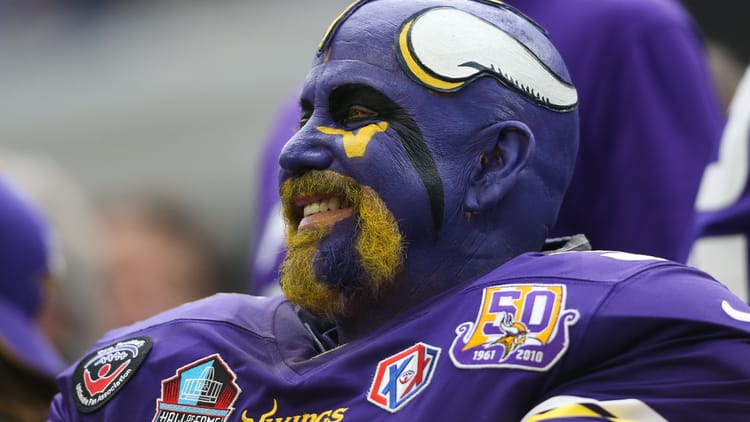Fans Will Be Back in September. So Will the Vikings Homefield Advantage.

The impact of the coronavirus is dwindling in the United States as the rapidly-produced vaccination is finding its way “into arms.” Roughly 42% of Americans are fully vaccinated as of June 5th.
From a football standpoint, that assures that most NFL stadiums — if not all — will be full in September when Week 1 of the regular season is on the docket. Season ticket renewals should be considered a reasonable indicator of attendance and enthusiasm.
The Vikings saw a a 99% renewal rate this offseason by season ticket holders. The remaining single game tickets (>6,000 per game remaining) are expected to be made available in mid-July, according to a release from the team.
— Courtney Cronin (@CourtneyRCronin) June 7, 2021
Indeed, the return of fans benefits all NFL franchises — especially the good ones — but it is of the utmost importance to the Minnesota Vikings. Head coach Mike Zimmer’s team was flat-out underwhelming at home during the pandemic season, compiling a flimsy 3-5 record at U.S Bank Stadium.
This was new, nasty territory for the Vikings.
U.S. Bank Stadium was opened for business in 2016. From that moment to the end of the 2019 regular season, the Vikings were phenomenal — with fans in attendance — at “The Bank.” In those four seasons, Minnesota tabulated a 24-9 (.727) record, establishing a venue of supremacy leaguewide. Winning 73% of home games, as the Vikings did from 2016 to 2019, was the second-best home win percentage in the NFL behind New England Patriots — who were 31-7 (.816) in the same timeframe.
How did the league’s second-best home team fare in 2020? Terribly. Minnesota suddenly turned to imbeciles without fans in stands. At 3-5 (.375) for last season, the Vikings plummeted to 19th in the business for home win percentage. In the years prior, the Vikings swam with the big fish pertaining to homefield advantage. In 2020, they found their standing less than average. They were equally as good [bad] as the Cincinnati Bengals, New York Giants, and Chicago Bears at home.
The offense was not the malady, though. With 231 total points scored at home in 2020 (29 per game), Minnesota ranked eighth leaguewide in offense. Zimmer’s team actually improved offensively with no fans around — or perhaps they merely engaged in shootouts more often. Much like everything from last year, the defense was the lightning rod for blame. The Vikings allowed 31 points per game at U.S. Bank Stadium, the third-worst around the league for home points-allowed. The offense cooked — the defense was lousy.
Corrective measures were enacted for the defense this offseason, however. General Manager Rick Spielman signed Patrick Peterson, Dalvin Tomlinson, Bashaud Breeland, Xavier Woods, Nick Vigil, and Stephen Weatherly via free agency — a total revitalization for a unit that was sans Danielle Hunter, Michael Pierce, Anthony Barr, and Eric Kendricks (for a handful of games) in 2020.
The offense was largely untouched. The draft was utilized to bolster the offensive line (Christian Darrisaw, Wyatt Davis) and Kirk Cousins’ possible [eventual] replacement was selected in the 3rd Round to watch-and-learn for a couple of seasons.
The emergence of the revamped defense and the additions of Darrisaw and Davis will be necessary for Minnesota to revisit the postseason. Under Zimmer, the Vikings alternate good seasons with mediocre ones. Therefore, per the weird calendar, the Vikings should be due for the playoffs yet again.
And homefield advantage will play a colossal role in forging that path.
